Mixing on headphones is both a skill and a bit of a trick.
You need to understand how sound works, know your specific headphones like the back of your hand, and have a good ear for picking out tiny details.
You also have to be careful about how you balance sounds and adjust tones, and where you place sounds in the mix.
If you can do all this, your music will sound legendary no matter where it’s played.
For any music producer, learning to mix on headphones is key because it lets you make music that sounds good everywhere, even if you’re not in a fancy studio.
In today’s article, we’ll break down:
- The basics of mixing with headphones ✓
- The difference between open-back headphones & closed-back headphones ✓
- Picking the best headphones for mixing ✓
- How to set up the perfect spot for headphone listening ✓
- Expert tips for getting the bass sound just right ✓
- How to make sure your music has good space and balance ✓
- How to use special tools and software to help you mix ✓
- How to make your music clear, full, and dynamic ✓
- How to get the volume and direction of sounds just right ✓
- Tips for solving common problems with headphone mixing ✓
- Much more ✓
By the end of this article, you’ll know all you need about headphone mixing so you can crush the mixing process and enhance your skills.
Plus, learn how to choose and use headphones for mixing, ensuring your music is professional and balanced.
So, let’s dive in…
Table of Contents
Understanding Headphone Mixing
As a music producer, mixing on headphones is an invaluable skill. The ability to mix accurately using headphones allows for flexibility and consistency across various listening environments. So, let’s start by diving into the basics of headphone mixing, differences between open-back and closed-back headphones, and selecting the ideal headphone models.
-
The Basics of Mixing on Headphones
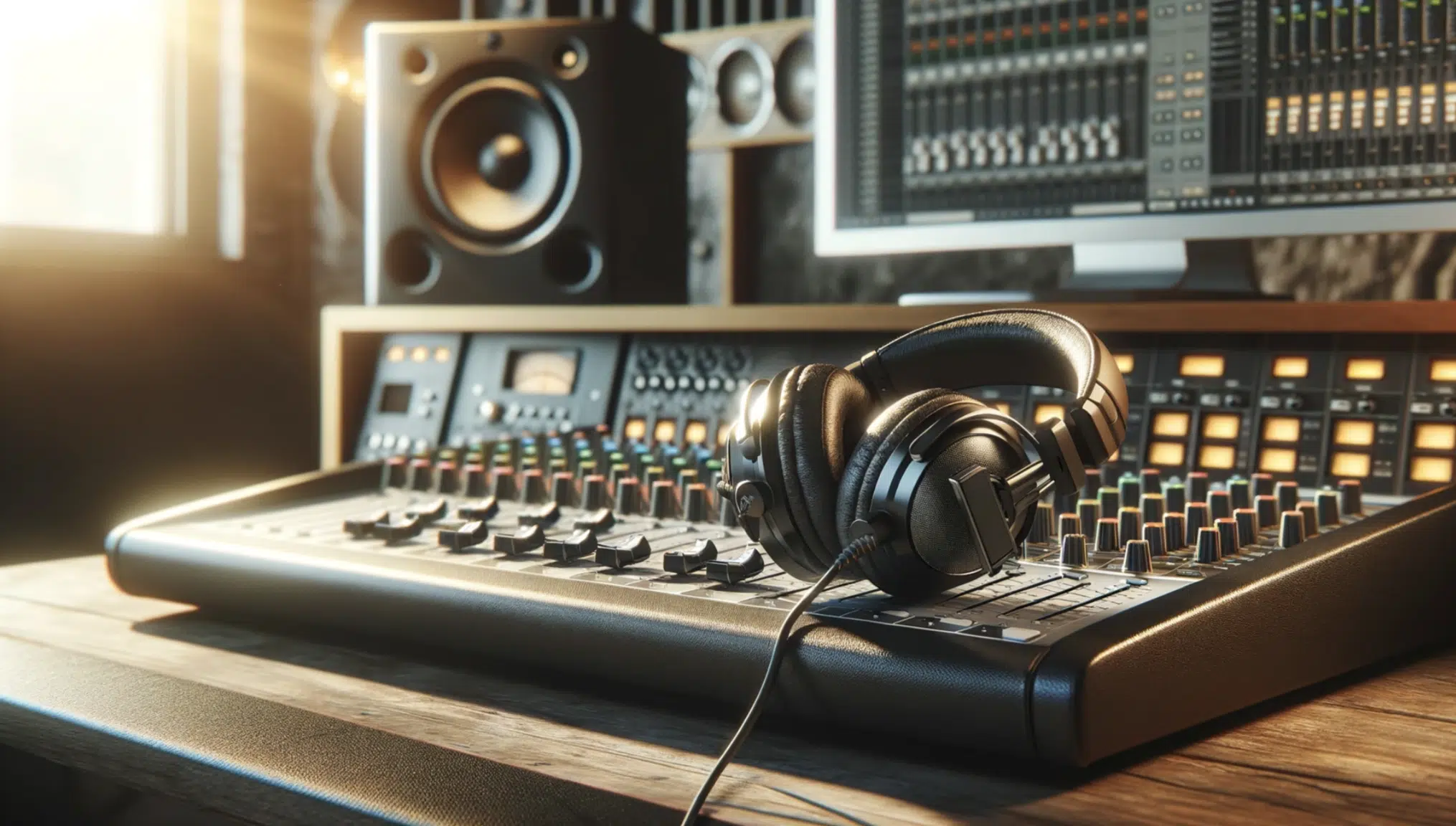
Mixing on headphones offers an intimate audio production experience, where details and flaws in the mix become more apparent.
Unlike studio monitors that project sound through air and interact with the room’s acoustics, headphones deliver sound directly to your ears.
This directness enhances the perception of detail but also requires an adjustment in mixing approach to ensure mixes translate well across other playback systems (not just headphone playback).
Headphone mixing can be particularly beneficial for identifying and correcting issues in the stereo image and frequency balance.
However, it also presents challenges, such as an exaggerated sense of stereo width and a skewed frequency response, particularly in the bass frequencies.
You have to learn to compensate for these differences to create balanced mixes.
One of the keys to successful mixing on headphones is familiarity with your headphone’s frequency response.
Understanding how your headphones color the sound is essential for making informed mixing decisions.
Always reference well-mixed tracks in similar genres (electronic music vs electronic music, for example) can help calibrate your ears and ensure your mixes translate well across various listening environments.
-
Open-Back Headphones vs. Closed-Back Headphones
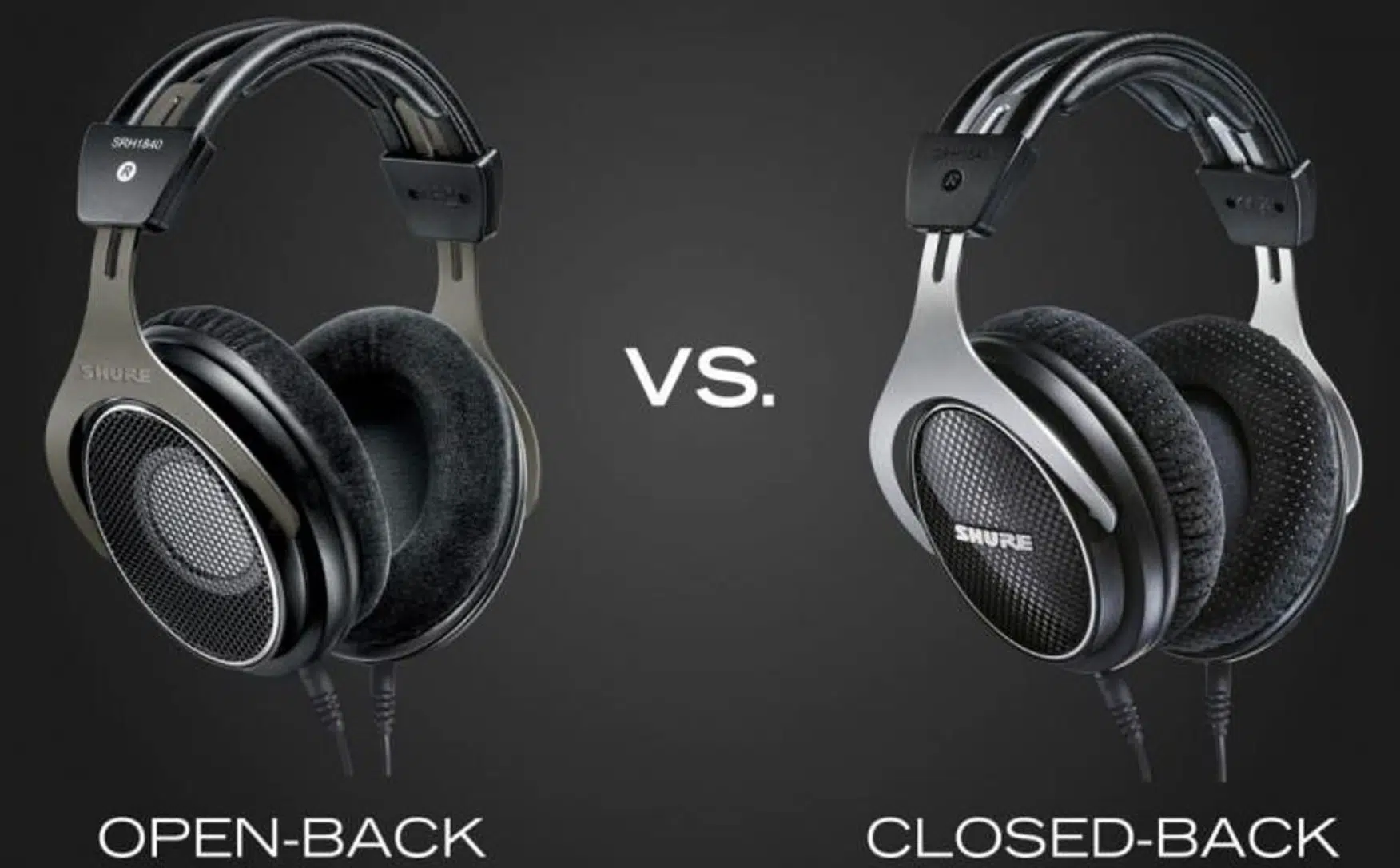
If you’re mixing on headphones, you’ve certainly got to know the differences between open-back and closed-back headphones, so let’s get into it.
Open-back headphones are known for their vented earcups 一 allowing sound to pass freely in and out.
This design provides a more natural and spacious listening experience, closely mimicking the sensation of listening through studio monitors in a well-treated room.
Open-back models are preferred for mixing due to their wider stereo field and more accurate representation of the frequency spectrum.
Closed-back headphones, on the other hand, are designed to isolate the listener from the outside world.
This isolation makes them ideal for recording sessions to prevent bleed into microphones but less so for mixing.
The closed design can often exaggerate bass frequencies and create a more confined stereo image, which may lead to mixes that lack spatial depth and clarity.
Despite these differences, both open-back and closed-back headphones can be used effectively for mixing with the right approach.
You should consider your specific needs (such as the need for isolation or the desire for a more natural listening experience) when choosing between these types.
The choice between open-back and closed-back headphones might depend on the mixing environment.
For instance, in noisy environments, closed-back headphones can offer the isolation needed to focus on mixing tasks, while open-back headphones are more suited to quiet, controlled spaces.
-
Choosing the Right Headphone Models
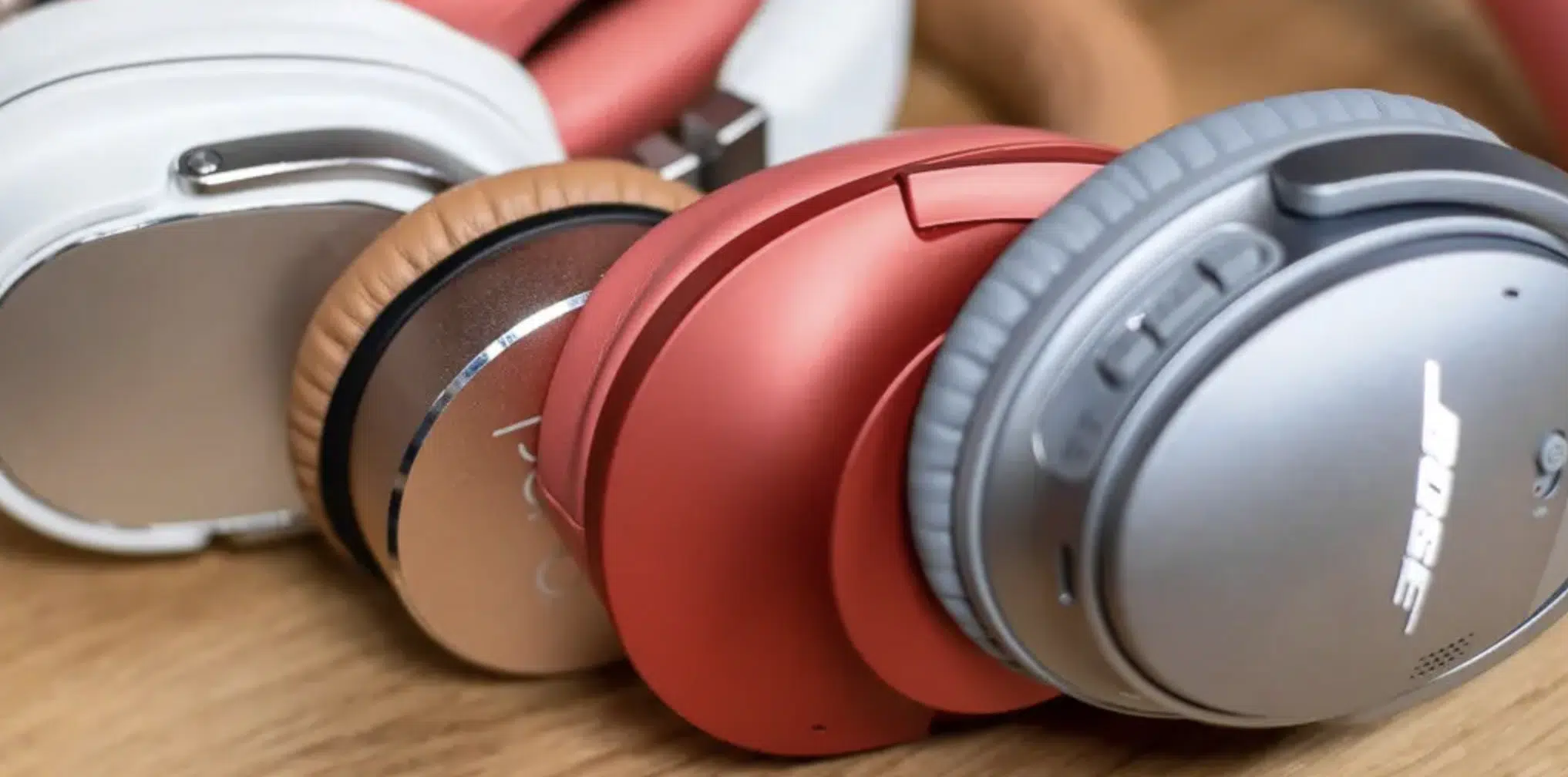
When you’re choosing a pair of good headphones for mixing, certain things are more important over others.
This includes:
- Audio quality
- Frequency response
- Comfort
- Purpose
Headphones with a flat or neutral frequency response are preferred as they offer the most accurate representation of the mix without coloring the sound excessively.
Various headphone models cater to different budgets and preferences, but investing in high-quality headphones is crucial for critical listening tasks.
NOTE: Models such as the Sennheiser HD 800 S (open-back) and the Beyerdynamic DT 770 Pro (closed-back) are popular among audio professionals for their detailed sound reproduction and durable build.
Comfort is also a significant consideration, especially for prolonged mixing sessions.
Headphones that offer adjustable headbands, ample padding, and suitable ear cup size can help minimize fatigue and keep you focused on your mix for longer periods.
-
Creating an Optimal Listening Environment
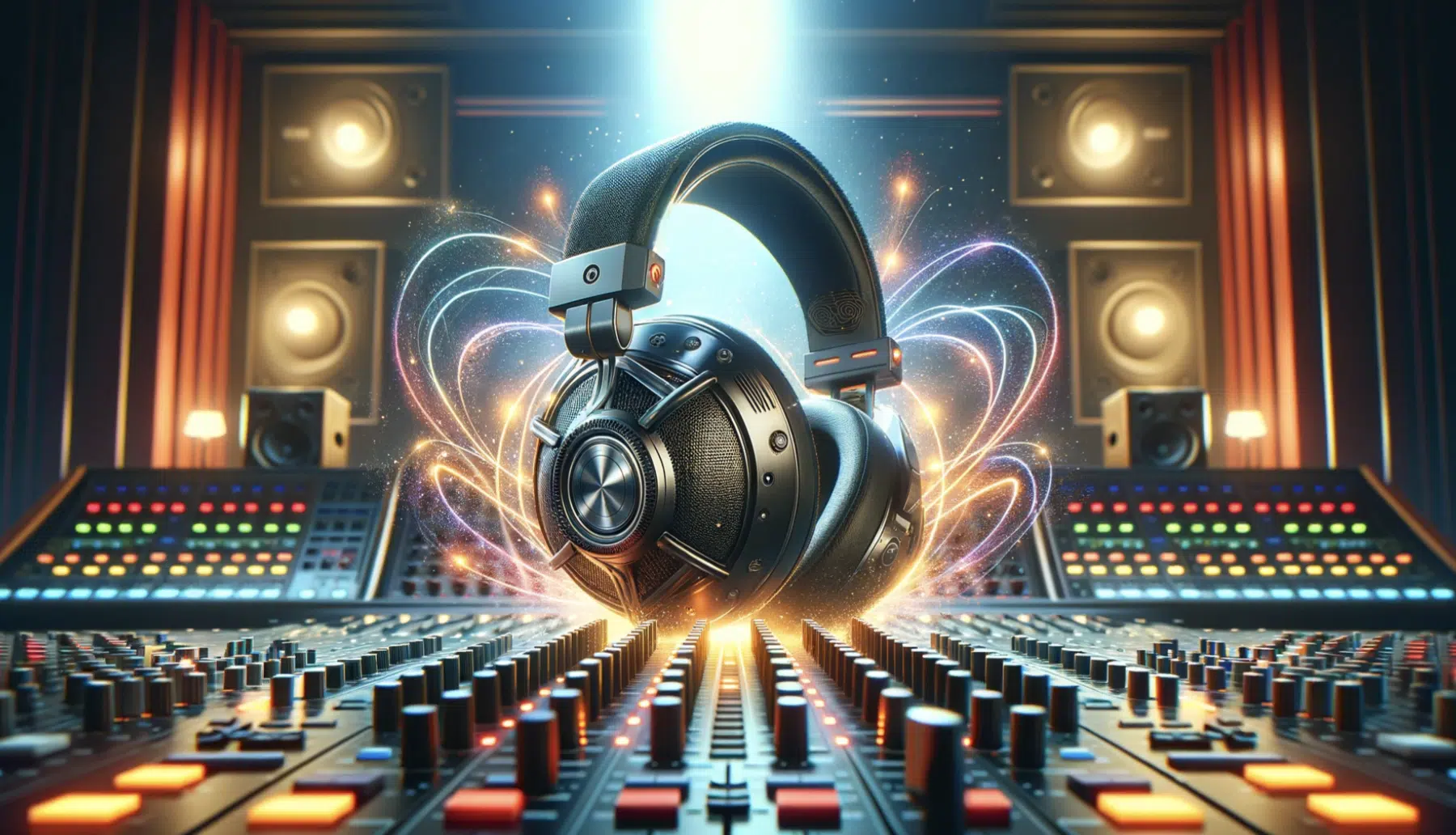
Creating an optimal listening environment for mixing on headphones involves more than just selecting a quiet room.
The goal is to minimize external noise that can interfere with the mixing process.
High-quality headphones can isolate your ears from the outside world, but it’s also essential to consider the room’s acoustic properties.
A well-treated same room (yes, even when using headphones) can contribute to a more focused and less fatiguing listening experience.
Meaning, working in a space where external sounds are minimized is vital.
It ensures that when you’re assessing audio quality, what you’re hearing is as close to the direct sound from your headphones as possible.
Another aspect to consider is the psychological impact of your environment on the mixing process 一 a clutter-free, organized workspace is a game-changer.
Additionally, ensuring your workspace is ergonomically set up can reduce physical strain during long mixing sessions.
For headphone mixing, this might mean having a comfortable chair, a desk at the right height, and possibly a headphone amp.
This will give you easy control over volume and other settings without having to reach for your computer, laptop, or audio interface constantly.
-
Pro Tip: Having a Reliable Headphone Amp
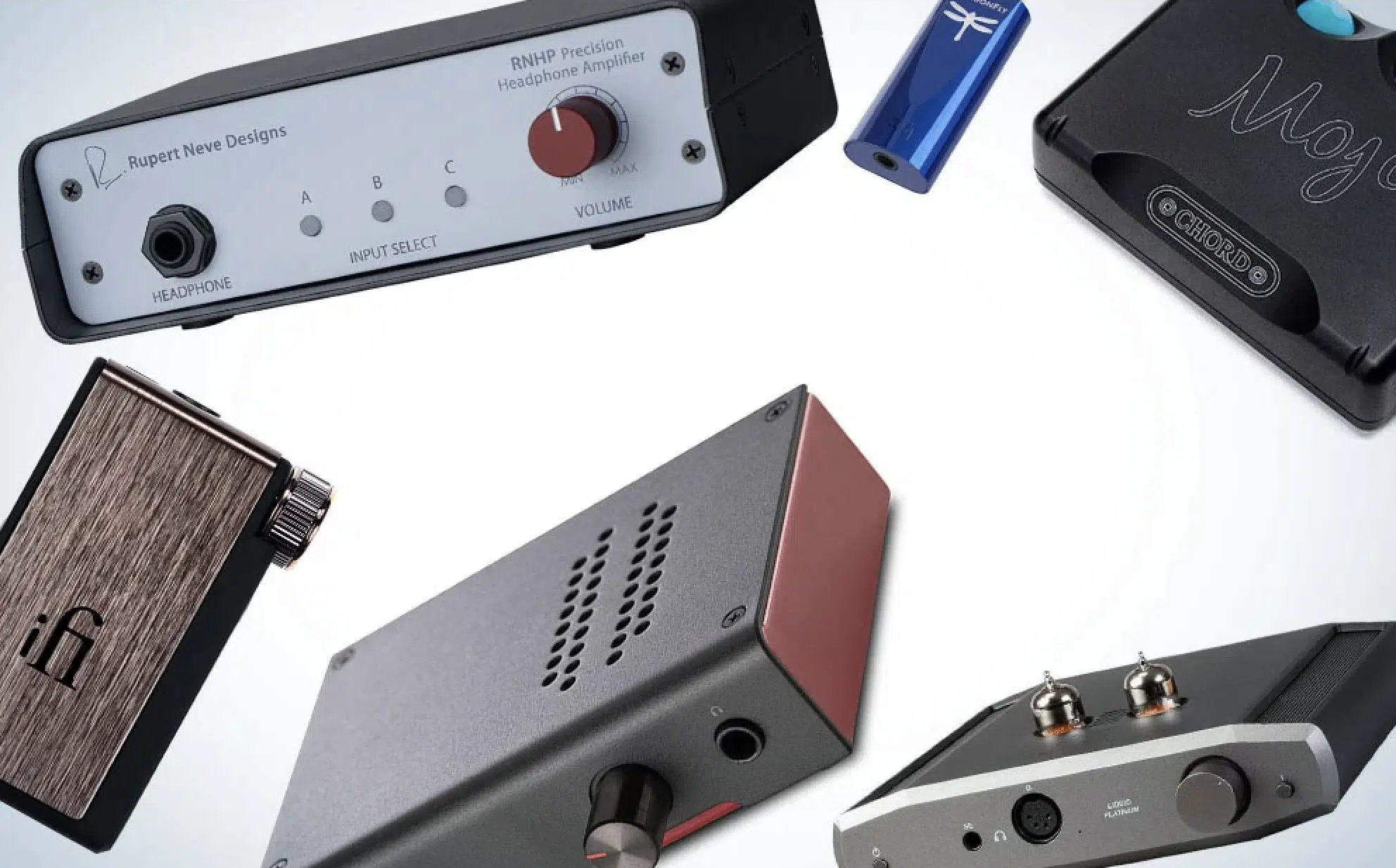
It’s super important to have a reliable headphone amp to drive your pair of headphones adequately.
Not every pair of good headphones are created equal, and some require more power than others to deliver their best sound quality.
A good headphone amp can make a significant difference in audio clarity, allowing you to, with greater precision, hear the:
- Bass frequencies
- Midrange frequencies
- Higher frequencies
This is especially important when mixing bass-heavy music or when trying to balance the stereo field accurately.
Make sure to always analyze your music to make sure it’s optimal.
-
Testing on Various Playback Systems
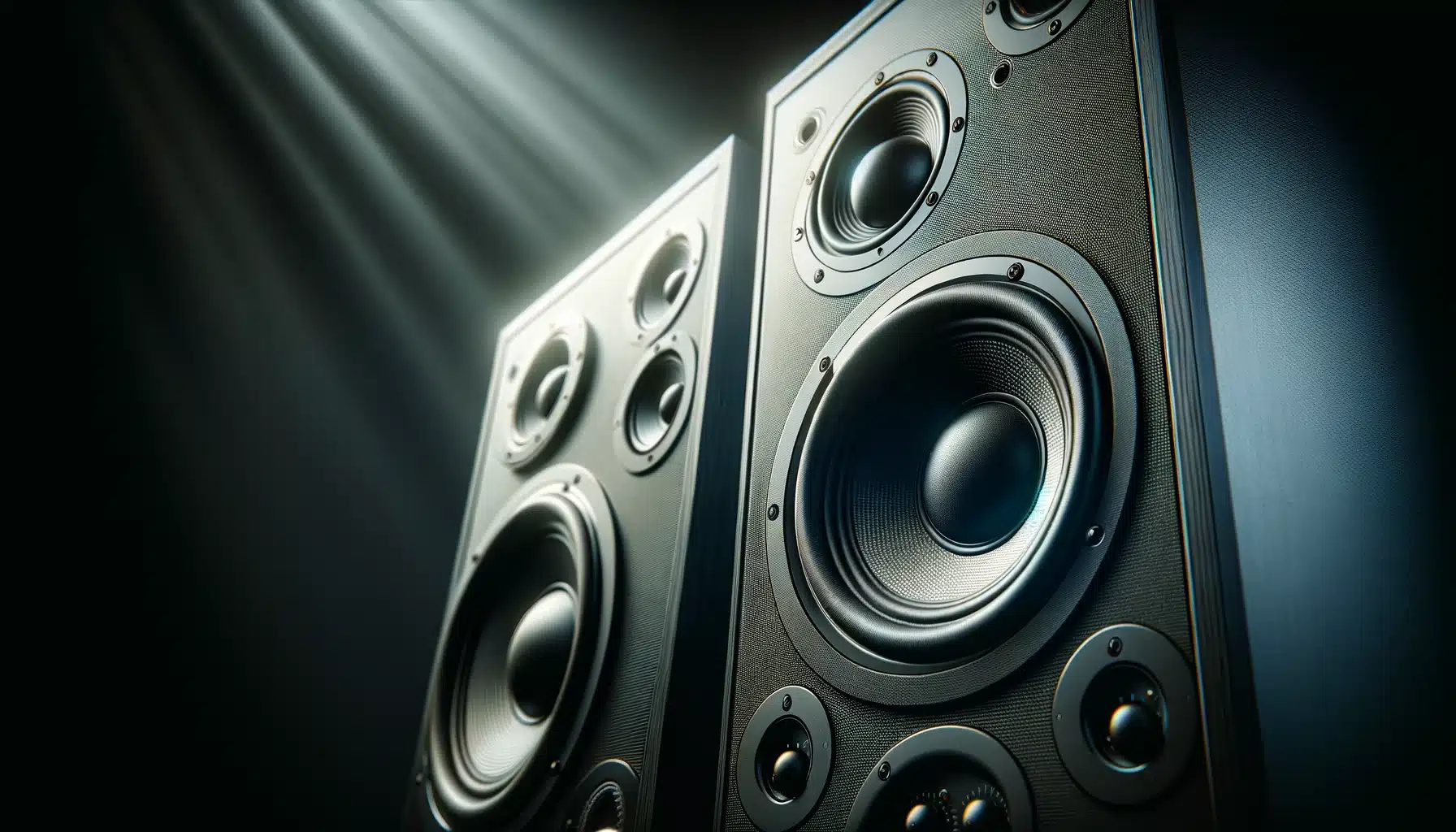
One of the critical aspects of successful mixing on headphones is ensuring that your headphone listening/mixes translate well across a variety of playback systems.
This means checking your mixes not only on your studio monitors and a pair of headphones but also on:
- Consumer-grade speakers
- Car audio systems
- Smartphone speakers
- Etc.
The reason behind this is straightforward: your listeners will use a wide range of devices to listen to your music, and you want to ensure that your mix be will sounding good on all of them.
Reference-checking like this helps you identify and correct any issues with frequency response, stereo imaging, and overall mix balance that might not be apparent on your primary mixing setup.
It can be as simple as bouncing your mix to a few different formats and playing them on various devices around your home or studio.
Pay particular attention to the bass frequencies, as these can vary dramatically between different playback systems.
Too much bass guitar on one system might translate as too little on another.
Additionally, consider how stereo effects and panning translate on systems with different stereo imaging capabilities.
Like the narrow stereo field of a smartphone speaker versus the wider field of car speakers (left/right speaker) or headphones.
Expert Tips for Mixing on Headphones
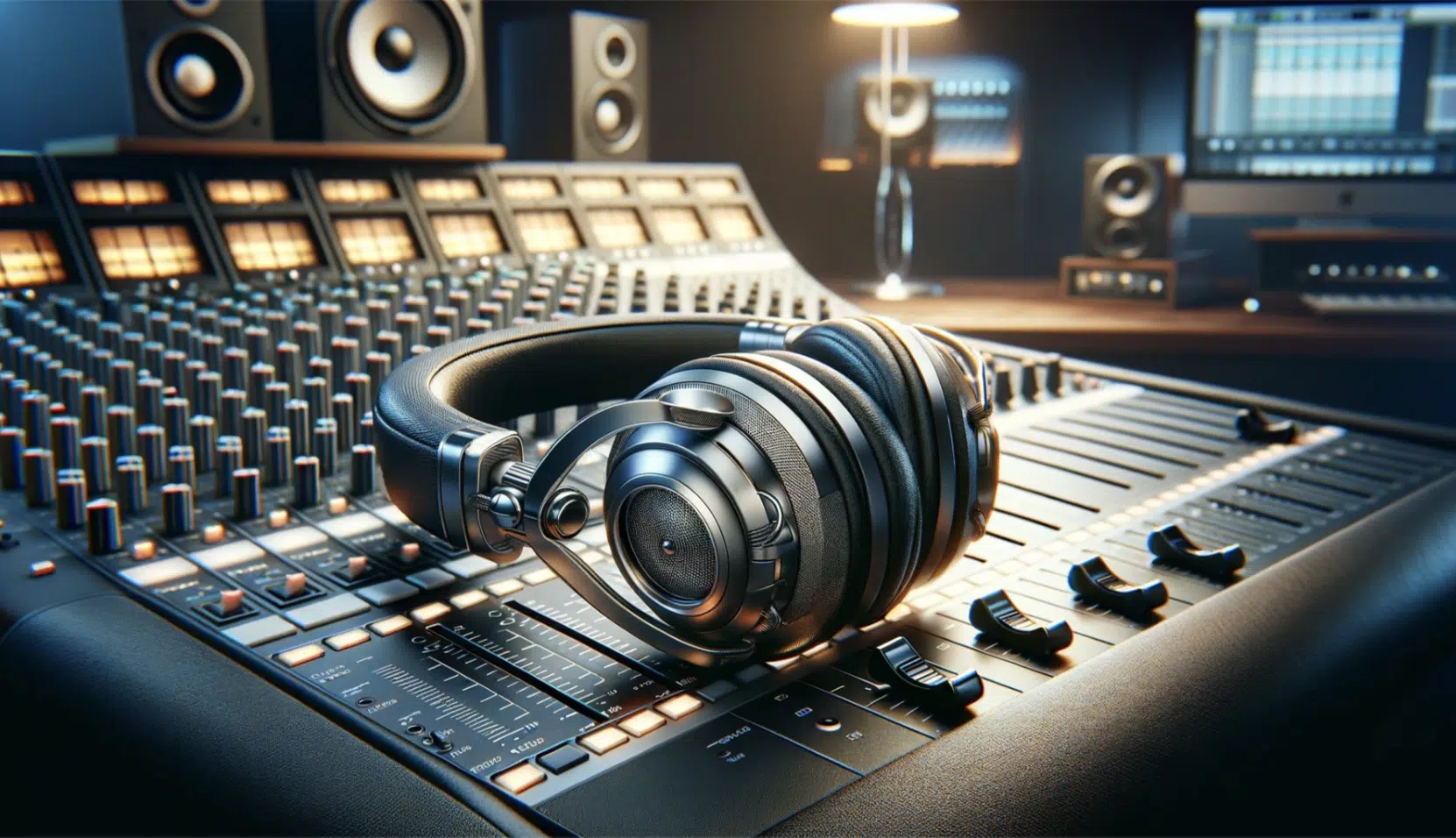
Mixing on headphones offers unique advantages, such as the ability to hear tiny details in the mix and the convenience of professional mixing in any environment.
However, to get to that point there are a few things you should master…
#1. Understanding the frequency response of your headphones should be your first mission.
Most headphones exhibit some degree of coloration, with certain frequencies being emphasized or attenuated.
Familiarize yourself with your headphones’ sound by listening to a wide range of professionally mixed music or project files.
This will help you understand how a well-balanced mix should sound on your specific pair of headphones.
#2. Take advantage of stereo imaging capabilities of headphones.
Headphones offer a distinct advantage in hearing the placement of instruments and effects in the stereo field.
Use this to your advantage by paying close attention to the left and right balance, and the placement of elements across the stereo spectrum.
This can help you create a more immersive and dynamic mix.
But don’t overuse hard panning, as it might lead to a mix that feels unbalanced and sloppy on a speaker system.
#3. Don’t forget the importance of volume leveling.
Mixing at too high a volume can lead to ear fatigue and may distort your perception of bass levels and dynamics.
It’s advisable to mix at moderate volume levels and periodically check your mix at lower volumes.
By doing so, your mix will maintain clarity and balance 一 regardless of how loud it’s played back.
Also, don’t forget to take breaks to prevent ear fatigue and keep your ears fresh, as it will always lead to more accurate professional mixing decisions.
-
Achieving Accurate Bass Frequencies
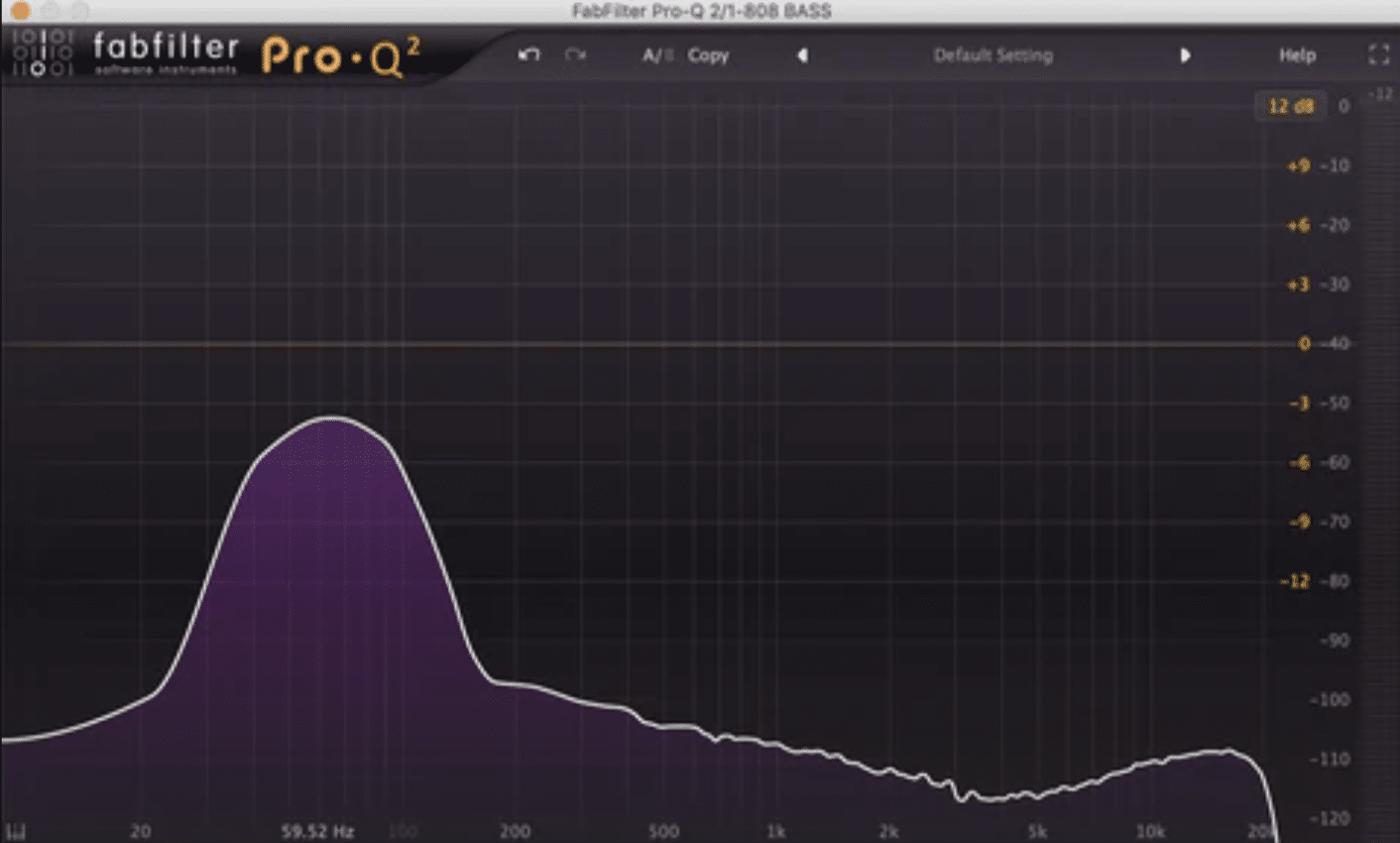
One of the most challenging aspects of professional mixing on headphones is achieving accurate bass frequencies.
Headphones, especially those with closed-back designs, can sometimes exaggerate bass, leading to headphone mixes that sound bass-heavy when played on other systems.
To battle this, it’s essential to understand the frequency response of your pair of headphones makes and how they handle bass extension/bass extension issues.
Again, it takes a little practice to hear and master, but it becomes second nature.
Using headphones with a ruler-flat frequency response can help, but it’s also beneficial to use reference tracks.
Reference tracks that you know well can serve as a benchmark for how much bass is too much or too little.
Another technique to achieve accurate bass frequencies is to use a high-quality headphone amp that provides a detailed and clear representation of the bass.
This clarity can help you make more informed decisions about bass levels in your mix.
Also, experimenting with bass management plug-ins can offer more control over the bass frequencies 一 allowing you to hear and sculpt the low end with precision.
It’s super beneficial when it comes to headphone listening in particular.
These tools can simulate the bass response of different playback systems.
It gives you a better idea of how your mix will translate across various listening environments, like phones, cars, virtual speakers, etc., not just how your headphone sounds.
Speaking of bass plugins, if you’re looking for the dopest bass plugin around, we’ve got you covered.
-
Pro Tip
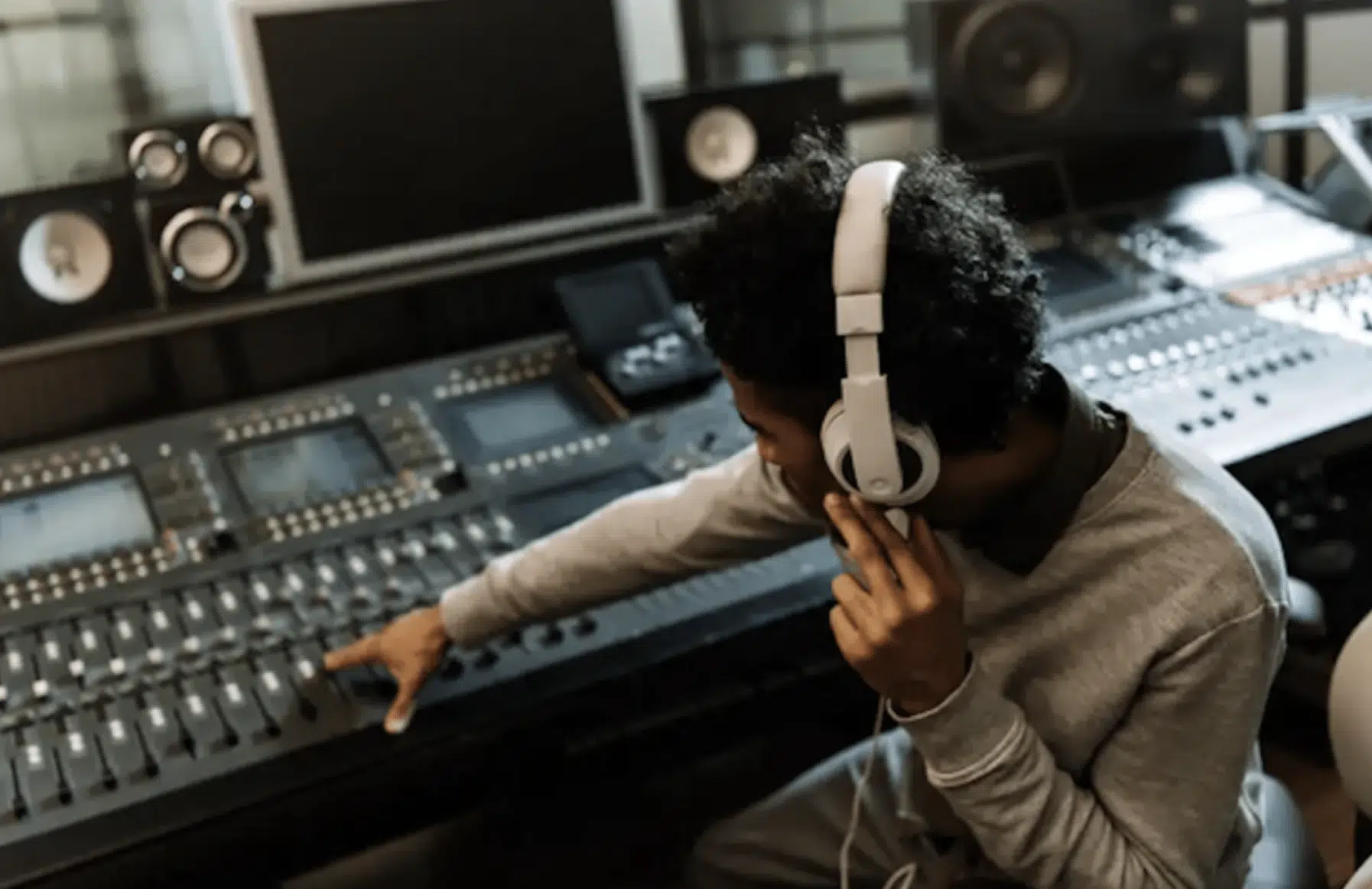
Critical listening in various environments can enhance your ability to judge bass levels accurately.
Spending time listening to your mixes on systems known for their bass reproduction (like car stereos or club sound systems) can provide valuable feedback on how your headphone mixes translate.
This real-world testing complements the isolated environment of headphone mixing and can guide adjustments to ensure your mix has the right amount of bass.
Yes, regardless of the listening setup.
-
Managing Stereo Imaging and Frequency Spectrum
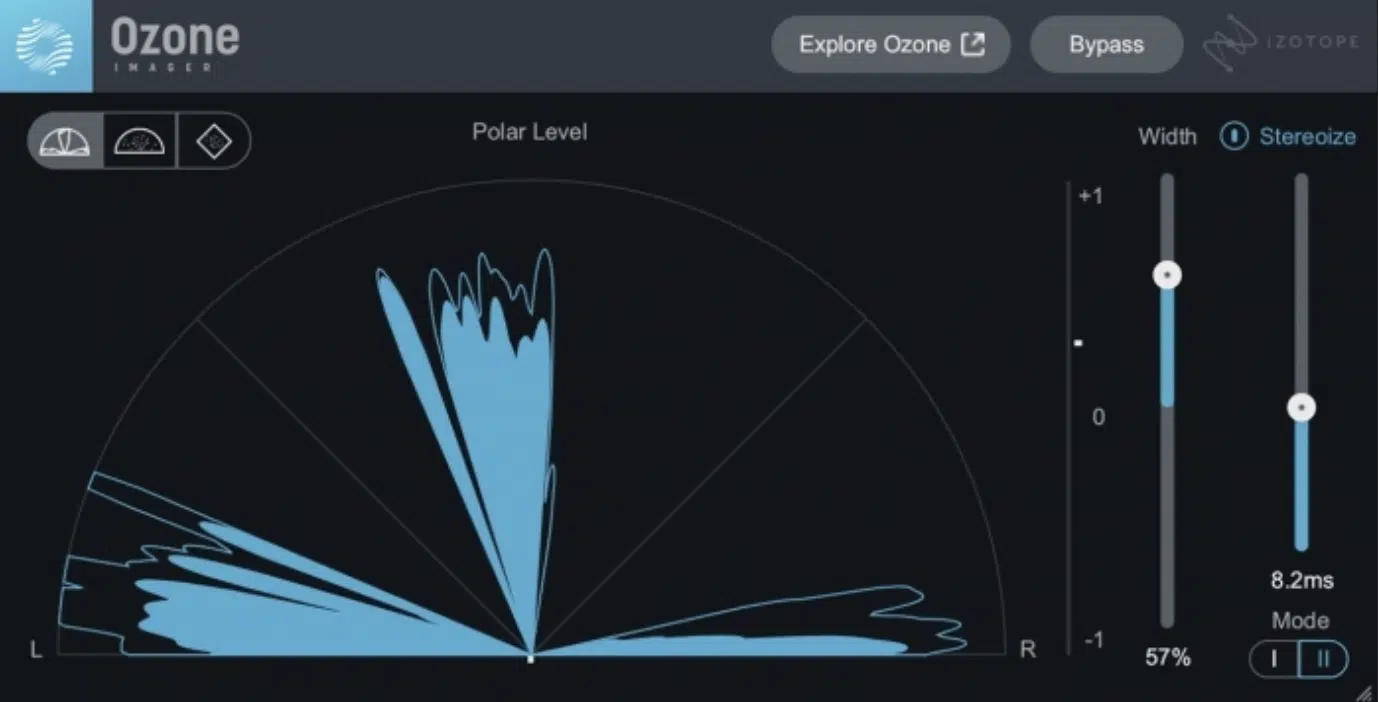
Stereo imaging is a powerful tool in the mixer’s arsenal, particularly when mixing on headphones.
Headphones provide a unique advantage in perceiving the stereo field as they allow you to place elements with precision.
However, this advantage comes with the prospect of potentially creating a mix that’s too wide or disjointed when played on speakers.
To manage stereo imaging effectively, use binaural processing tools and stereo imaging plug-ins that help simulate the spatial characteristics of listening on speakers.
They’ll help you make sure your mix translates well across all playback systems (which, again, is super important).
When it comes to the frequency spectrum, headphones offer the ability to hear intricate details in the mix.
This precision allows for nuanced adjustments across the frequency spectrum, which ensures each element sits perfectly in the mix.
However, it’s essential to maintain a balance…
Over-emphasizing certain frequencies because they’re more apparent on headphones can lead to a mix that sounds unbalanced on other systems.
To avoid this, regularly check your mix on different systems and consider using spectral analyzers and EQ matching tools to ensure a balanced frequency response.
Another technique for managing the frequency spectrum effectively is to use high-pass filters and low-pass filters to clean up the mix when you’re headphone listening.
This can help eliminate unnecessary frequencies that clutter the mix or cause interference between elements.
For instance, applying a high-pass filter to remove low-end rumble from tracks that don’t contribute to the bass can clarify the overall sound.
This allows the true bass elements to shine through more clearly 一 giving that clean, deep sound you hear in professional tracks.
-
Utilizing Plug-ins and Software
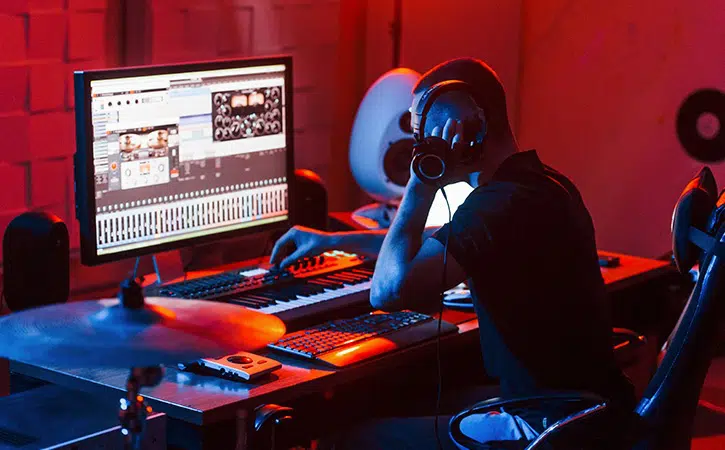
In the digital age of music production, plug-ins and music production software are indispensable, especially for those mixing on headphones.
These tools can emulate the acoustic properties of various environments, from anechoic chambers to well-treated studios.
Virtual room simulation plug-ins, for example, can mimic the experience of mixing in a studio with high-quality speakers.
It provides a more accurate representation of how mixes will sound in the real world.
This technology bridges the gap between headphone mixing and traditional studio mixing 一 offering the best of both worlds.
Another set of tools essential for headphone mixing includes headphone correction software.
These handy tools adjust the frequency response of your headphones to achieve a flat, neutral sound.
By compensating for the natural coloration and frequency response anomalies of your headphones, these software options allow for a more accurate mixing environment.
Pairing these correction tools with spatial simulation software can also create a more immersive and realistic mixing experience.
One that closely replicates the sensation of mixing on high-quality studio monitors in a well-treated room.
-
Pro Tip: Critical Listening and Reference Tracks
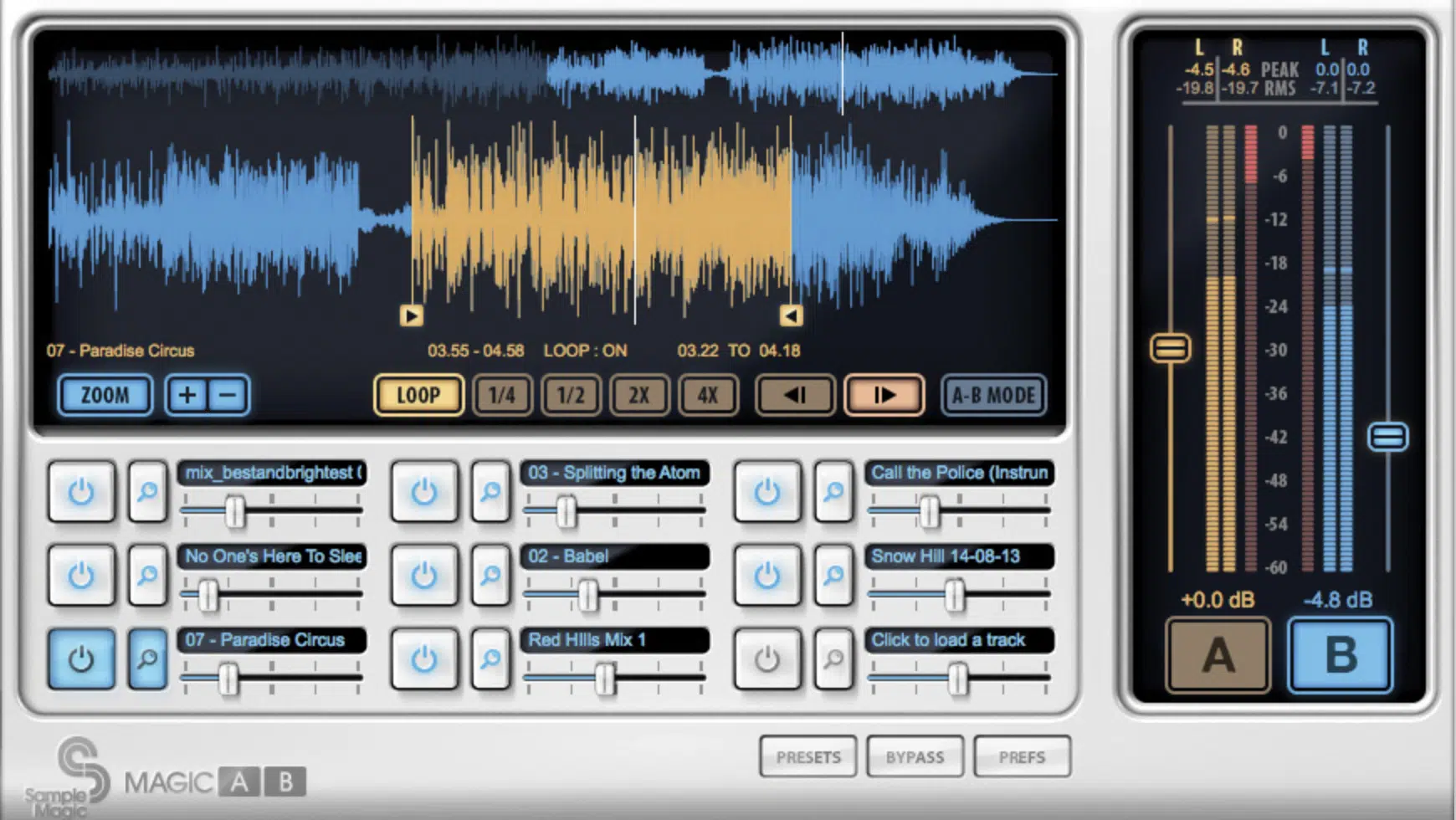
Critical listening is a skill that develops over time and is key for successful mixing on headphones.
It involves paying close attention to the details in the music, from the balance of elements to the texture of sounds.
Integrating reference tracks into your mixing process can significantly sharpen your critical listening skills.
By comparing your mixes to professionally mixed and mastered tracks, you can develop a better understanding of how well your mix translates across different systems and genres.
It helps identify any discrepancies in:
- Frequency balance
- Stereo imaging
- Dynamics
Reference tracks should be chosen carefully 一 selecting beats that are well-produced and similar in style to the music you’re mixing.
Listening to these tracks on sounding-good headphones can provide a great way to hear/manage audio quality.
It’ll help you gauge how much bass is appropriate, how to balance the stereo field, and how to manage the dynamic range.
Granted, it takes a little practice, the right room, and the ability to hear little intricacies, but it’s certainly worth it.
Also, using reference tracks from a variety of playback systems (including any speaker type and other headphones) can offer insights into how different environments impact the perception of your mix.
It ensures that your mixes are not only polished and professional on your headphones but also across a wide range of listening scenarios.
Mixing Techniques for Clarity and Depth
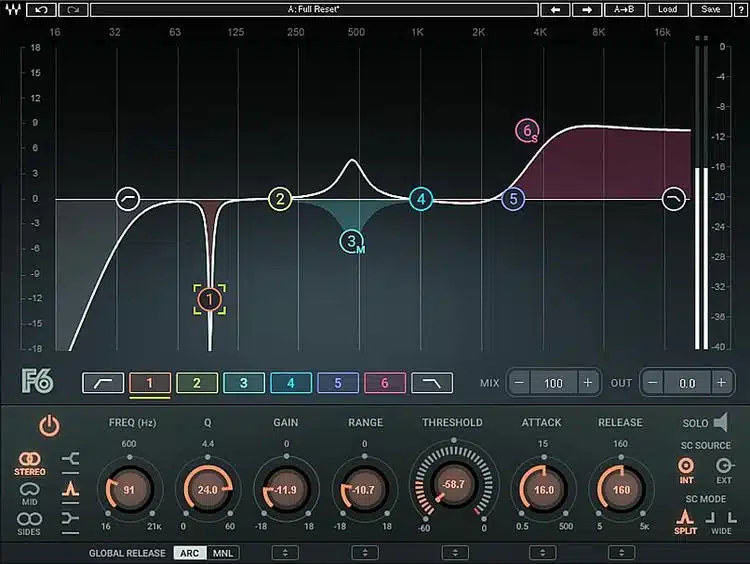
Achieving clarity and depth in your mixes while using headphones requires you to master creative mixing techniques.
Try using EQ to separate elements within the mix, which allows each part to have its own space in the frequency spectrum.
For instance, carving out a specific frequency range for the vocals can ensure they cut through the mix without clashing with other instruments.
Similarly, sidechain compression can be used to create space for the bass whenever the kick drum hits 一 enhancing the mix’s overall clarity and depth.
Another technique to add depth when you create headphone mixes is to experiment with reverb and delay effects with care.
These sound effects can simulate the acoustic properties of physical spaces/certain room types, adding a sense of dimension to your mix.
However, it’s key to use these effects sparingly and with intention, as too much reverb or delay can muddy the mix and reduce clarity.
Setting up send/return channels for these sound effects allows for more control over their application, enabling you to blend them seamlessly into your mix.
-
Pro Tip: Mixing in Mono
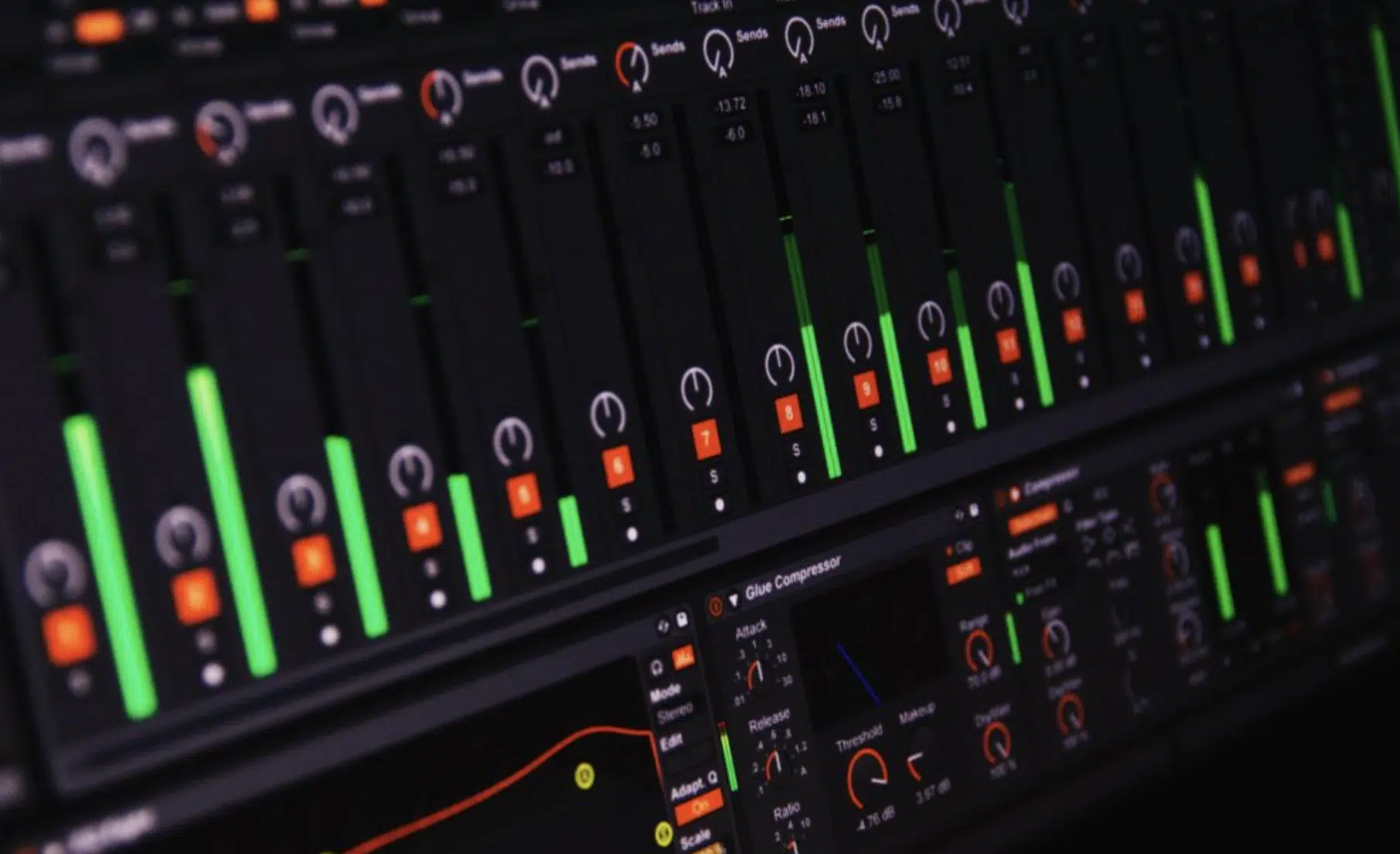
Mixing in mono is a mixing technique often overlooked by some, yet it’s incredibly valuable, especially when mixing on headphones.
By temporarily summing your stereo mix to mono, you can reveal issues with phase cancellation and ensure that your mix is coherent and powerful on mono playback systems.
This can include smartphone speakers and some Bluetooth speakers.
It forces you to make decisions based on balance and frequency allocation 一 ensuring that every element in the mix can be heard clearly.
-
Balancing Levels and Panning
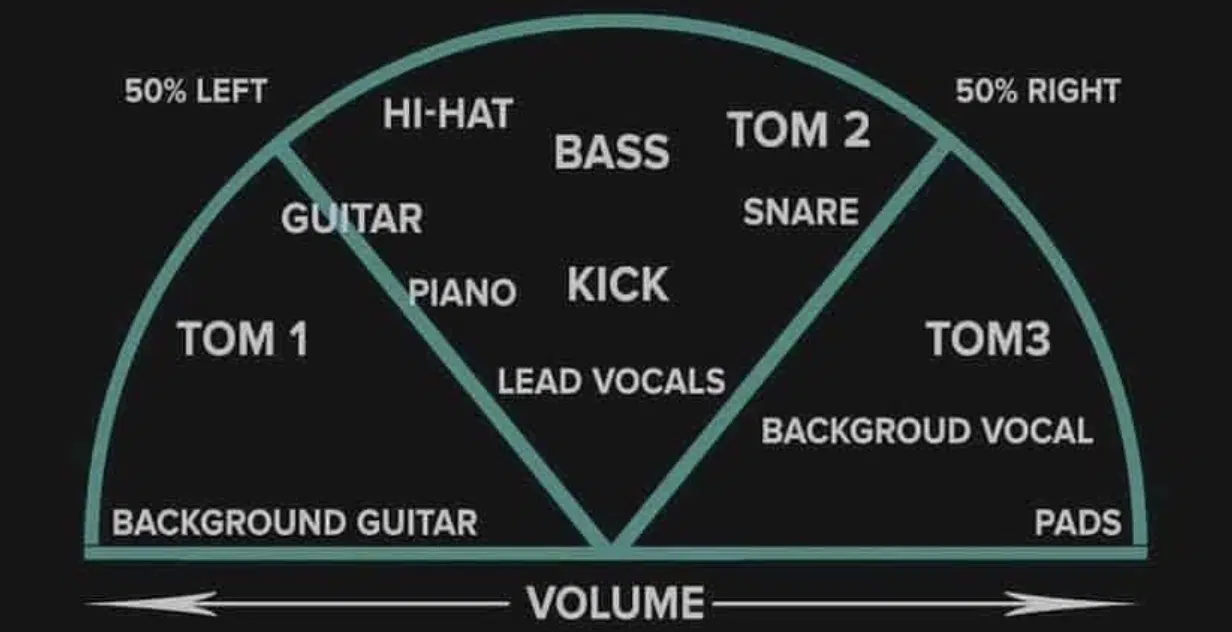
Balancing levels and panning are foundational aspects of the mixing process, significantly impacting the final mix’s clarity and spatial impression.
Achieving a balanced mix on headphones involves careful adjustment of track volumes to ensure each element is heard clearly without overpowering the others.
Utilizing volume automation can help maintain dynamic balance throughout the track, so you can make the right adjustments.
Panning is equally important, as it helps create a sense of space and dimension in your mix.
When mixing on headphones, it’s possible to be more precise with panning decisions, placing instruments and sounds within the stereo field with great accuracy.
However, it’s essential to maintain a sense of balance and realism 一 avoiding extreme panning that might sound disorienting on speakers.
Again, reference tracks are an invaluable resource to help you understand common panning choices and how they contribute to the overall mix’s feel.
Bonus: Dealing with Common Headphones Problems (Summing it Up)
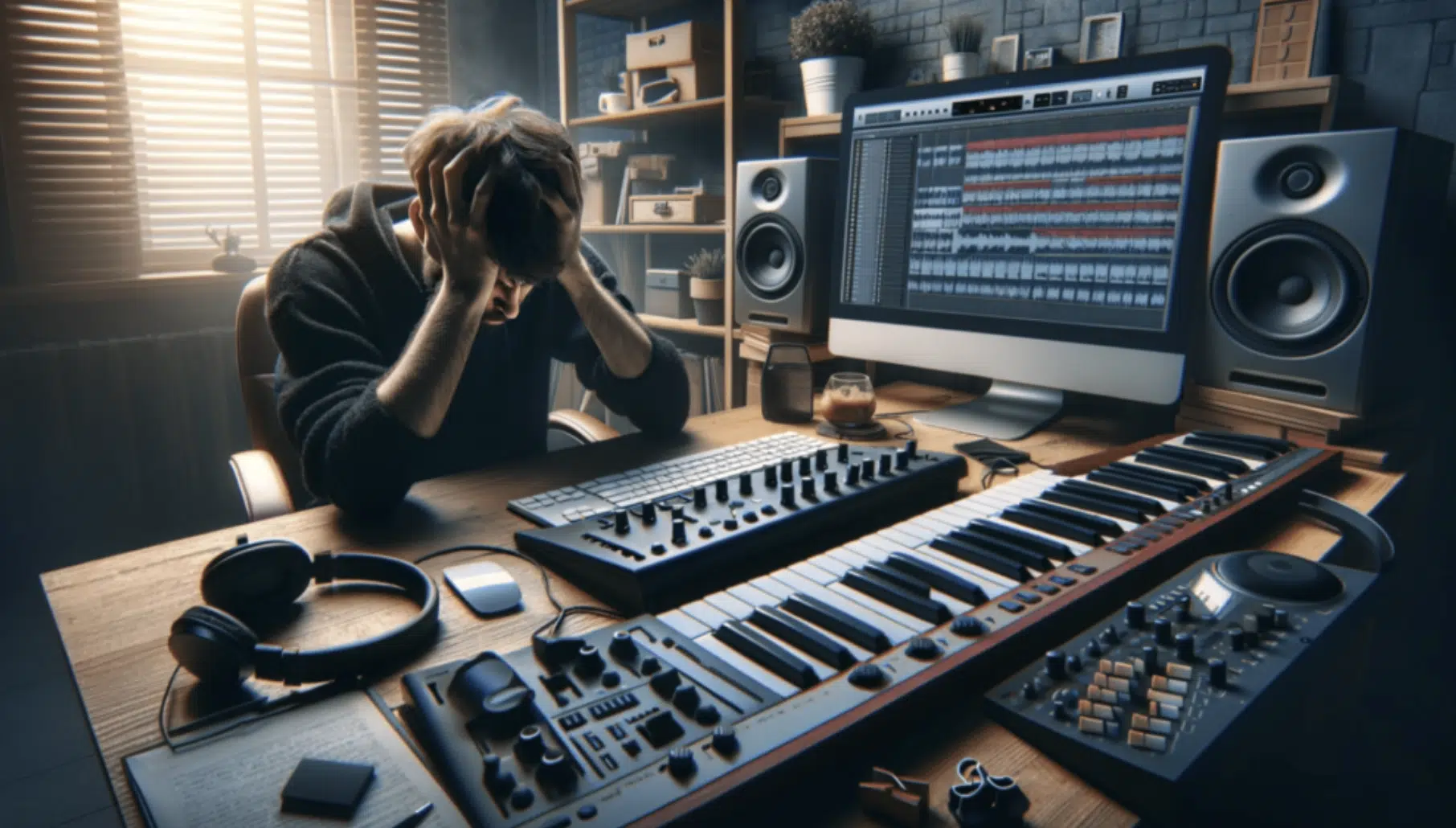
One common issue when mixing on only headphones for prolonged periods is ear fatigue, which can distort your perception of the mix and lead to poor decision-making.
So, it’s important to take regular breaks during long mixing sessions to rest your ears (left ear/right ear) since you’ll be wearing headphones in excess.
When you’re listening for prolonged periods, it helps your ears, the outer ear and inner ear, remain fresh and your mixing decisions are on point.
Plus, it’ll help make sure you swerve any long-term hearing damage in the future.
A good strategy is to set your monitoring level to a comfortable volume where you can hear all elements of the mix clearly without straining your ears.
Another issue that’s super common amongst producers, mixing and mastering engineers, etc. is the challenge of accurately judging low-end frequencies (such as the bass and kick drum).
Headphones can sometimes either exaggerate or underrepresent these frequencies 一 leading to mixes that lack balance in the low end when played on other systems.
To address this, cross-referencing your mixes on different playback systems can provide valuable feedback on how your mix translates across various listening environments.
And that, my friends, sums up the most common issues you’ll most likely run across when you’re mixing on headphones.
Mixing on Headphones: Final Thoughts
Mixing on headphones is a powerful technique that can open up new possibilities for precision and intricate tweaking in your mixes.
It allows you to catch details you might miss on speakers.
But, if you’re not careful, it can also lead to mixes that don’t translate well to other playback systems…
In turn, making your tracks sound unbalanced and disconnected from the listener’s experience, and nobody wants that.
To help you further understand, you should analyze how perfectly mixed tracks are structured and want to dive deeper into the art of mixing.
And that’s where the insanely accurate, mind-blowing free Famous Beatmaker Templates come in.
This pack contains the most accurate and organized structures of hit tracks for Ableton, FL Studio, and Logic Pro, all meticulously created by top producers and sound designers.
With these templates, you get a polished, insanely well-designed framework that you can tweak, customize, and truly make your own by adding any sounds you desire.
This gives you a unique opportunity to see firsthand how successful mixes are constructed 一 providing a practical reference point your mixing settings/processes.
Mixing on headphones doesn’t just have to be about convenience; it can be a beneficial choice that leads to super captivating and immersive audio experiences.
So, whether you’re working in a home studio or on the go, remember that with the right approach and tools, you can achieve mixes that sound incredible on any system.
Until next time…







Leave a Reply
You must belogged in to post a comment.